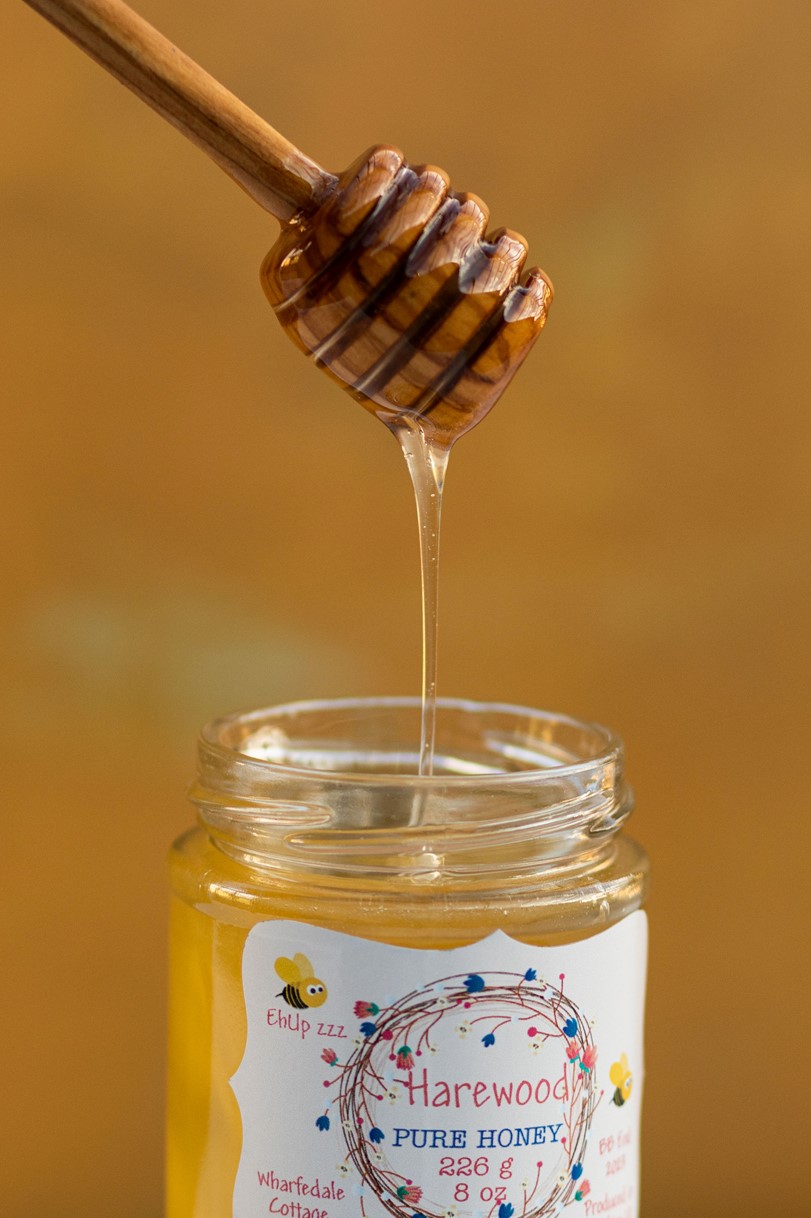
In this month’s guest blog, Harewood Food and Drink Project take us through the important role that bees have to play in our ecosystem and creating a regenerative environment at Harewood, as well as introducing us to Beekeeper Martyn, who keeps bees on the Estate and produces Harewood honey, which features in many a HF&DP dish.
Why are bees important?
We have a number of schemes in place to encourage a strong presence of bees, which helps to create a healthy, rich ecosystem encouraging biodiversity and a balanced habitat where a wide range of species can thrive alongside one another. Creating incredible food experiences that work in harmony, or to the benefit of, the local environment, has always been one of the key cornerstones of HF & DP.
Bees play a vital role in our food chain, as they pollinate a significant proportion of the food crops that we consume. Many of our everyday favourite food and drink items rely on pollination by bees, including many ingredients that can be found on site at Harewood; tomatoes, strawberries, figs, blackberries, mulberries and raspberries to name a few, all rely on bee’s activity. Other global everyday favourites include avocados, coffee, chocolate, grapes, i.e. wine.
The Harewood Bees
A couple of years ago we were approached by Martyn, after he’d attended one of our events. He asked if he could keep his hives on Estate land. In exchange, a couple of times a year, he’d drop a box of honey jars off to the estate office for us to use as we wish, usually around 50 jars. For HF & DP there’s nothing that inspires us more than meeting those who are masters of their craft. Martyn’s knowledge, dedication, care and love for his hives acts as a reminder of why we love what we do and how inspiring our surroundings are.
We sell the honey with 100% of proceeds being put towards buying wild flower seeds which we plant close to the hives. Planting a variety of bee friendly wild flowers helps to improve the health of the bee colony, enhances the flavour and yield of the honey and helps to create a richer, more balanced and biodiverse ecosystem here at Harewood.
We have a number of other schemes in place across the estate to encourage a thriving bee population; through the preservation of orchards, planting of 25 hectares of flower rich margins on our arable farms and we’ve adopted a 3-year hedge cutting regime to maximise flowers and blossom.
The Taste of Harewood
Since we set up HF & DP, we’ve been trying to answer the question “What does Harewood taste like?”. It’s possible that Martyn’s honey is the purest representation that we’ve found yet, or indeed, probably ever will.
A honey bee hive requires several hectares of flower rich habitat for it to thrive. The location of Martyn’s hives means that the bee colony will gather pollen from all over Harewood’s landscape, from a wide range of flowers, before returning to the hives.
When Martyn harvests his honey, we end up with 100% pure honey. This means that absolutely nothing is added, exactly as nature intended.
Each batch, even each hive, will have its own unique flavour, never to be replicated, dependent upon what’s flowering and in season and what crops are growing nearby. If you’re one of the lucky few who manage to get a jar, let us know what flavour profiles you can pick out, tell us, what does Harewood taste like?
Whenever a new batch of honey arrives, Josh and our kitchen team will eagerly start writing menus and dishes using Harewood honey, inspired by it’s incredible flavour and provenance.
A big thank you to Martyn for allowing us to tell his story and to Claire McClean for the photos.
Josh Whitehead’s Honeycomb Recipe
Honeycomb is a great addition to many different puddings, giving sweetness and crunchy texture. Break it up and use to garnish ice cream, cake or chocolate. It’s also delicious half dipped in melted chocolate and left to set as a homemade Crunchie bar!
Ingredients
- 320g Caster Sugar
- 130g Honey (Ideally Harewood Honey, but a good quality runny or wildflower honey will also be fine)
- 360g Glucose Syrup
- 80g Water
- 50g Bicarbonate of Soda, Sifted
Begin by adding all of the ingredients, bar the bicarb, in to a heavy based tall saucepan with the honey, water and glucose on the base of the pan.
Lightly grease a metal container and put to one side.
Heat the mixture on a low heat, gently stirring with a whisk until combined, then increase to medium high. Cook the mixture until it reaches 148 degrees on a food thermometer.
Take of the heat and vigorously whisk in the bicarbonate of soda for two seconds to mix well, then, being very careful as the mixture will be very hot, pour into the greased container and leave to set. At this point it’s very important not to aggravate the honeycomb as it can collapse, leave it to set at room temperature for one hour, not shaking or moving the tray.
Now you have the perfect addition to enhance any dessert !


